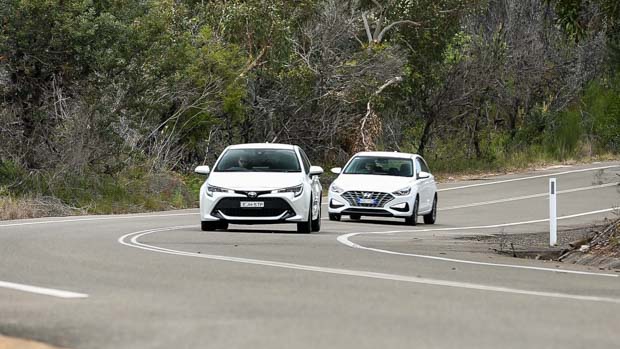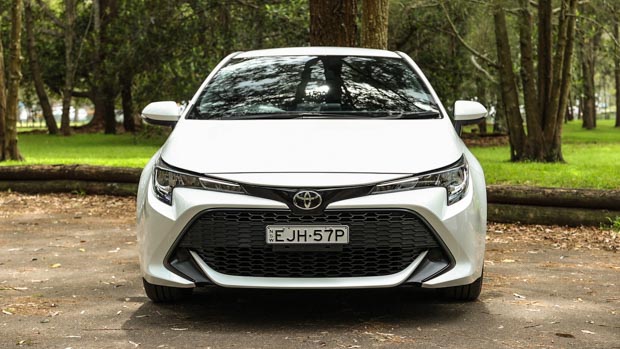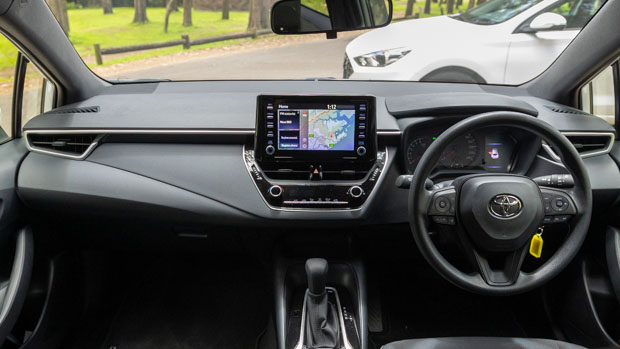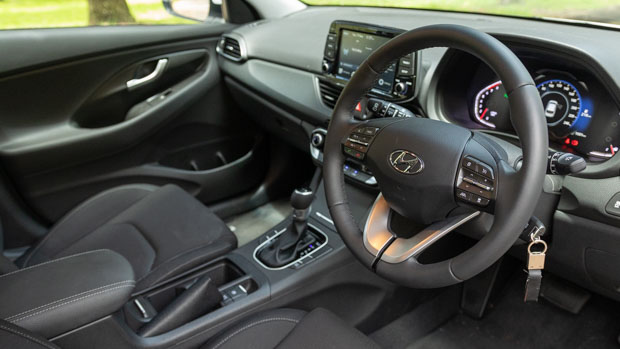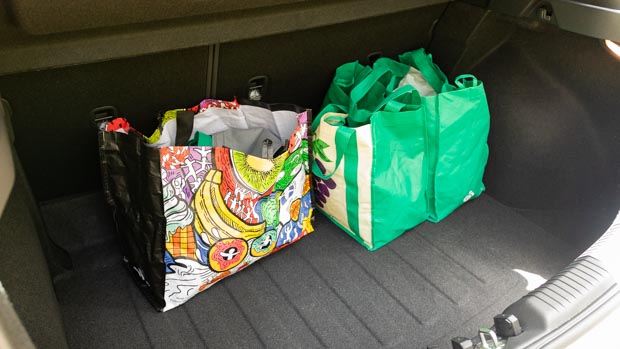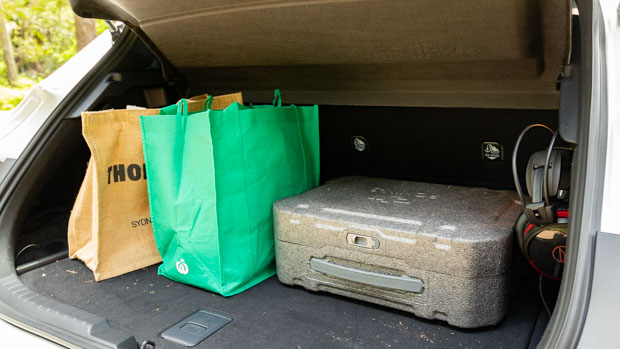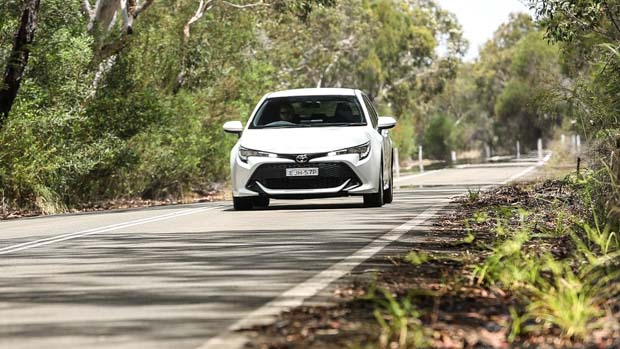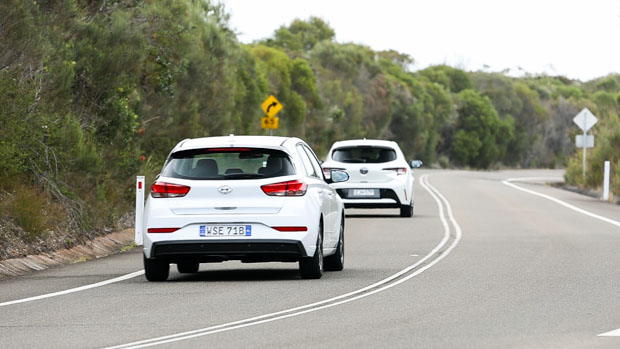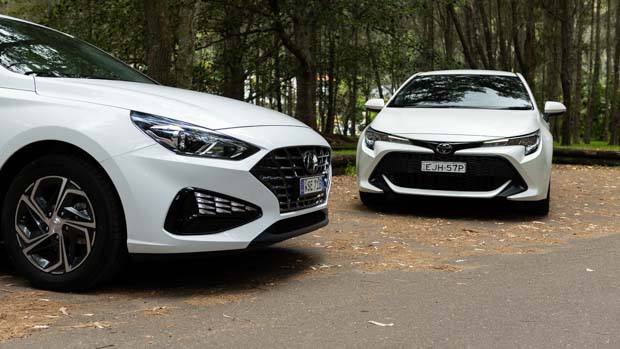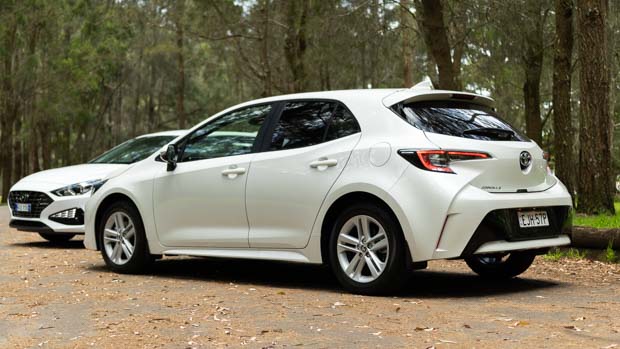-
Car Reviews
- All reviews
- Midsize SUVs
- Small cars
- Utes
- Small SUVs
- Large SUVs
- Large cars
- Sports SUVs
- Sports cars
- Vans
Latest reviews
- Car News
-
Car Comparisons
Latest comparisons
- Chasing Deals
The 2021 Hyundai i30 base model squares off against the 2021 Toyota Corolla Ascent Sport in our detailed hatchback comparison review
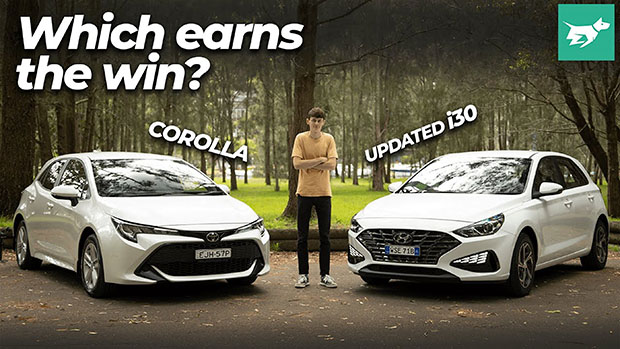
Though they’re battered and bruised by the sales success of utes and SUVs, the Toyota Corolla and Hyundai i30 remain some of the most popular vehicles in Australia. There are other choice options in this class including the Volkswagen Golf 110TSI ($33,750), Mazda 3 G20 Pure ($27,430) and Kia Cerato S ($25,490), but none perform at the consistently high level this pair does in the Australian sales charts.
Both are practical, affordable to buy and run, and have proven their reliability in harsh Australian conditions. Hyundai has tweaked the i30 hatchback for the 2021 model year, adding plenty more safety and convenience kit, while axing the bargain basement ‘Go’ variant.
Both makers here also offer four-door versions of their small cars, in the shape of the new Hyundai i30 sedan and the Toyota Corolla sedan.
We chose the most affordable variants of each vehicle; the i30 is now called just that, with the ‘Active’ trim sitting above. The Hyundai is priced from $23,420 (before on-road costs) with a manual gearbox, but this test car is more representative of the average i30 with a $2000 six-speed torque-converter automatic bringing the price to $25,420 before on-roads.
Toyota has equipped the base model Corolla Ascent Sport hatch you see here with an option pack that adds satellite navigation, DAB+ digital radio and rear privacy glass for $1030 bringing the price up to $27,435 with a CVT automatic.
At least the $515 ‘Frosted White’ paint gives this Corolla an edge as you approach – it’s detectably not the flat ‘fridge white’ you find on the Hyundai. That said, any white on these entry-level hatchbacks conveys a rental car image: we’d be adventurous and choose a more interesting hue.
Design-wise, the work done by the Koreans up front has elevated the Hyundai i30 handily adding aggression without going over-the-top. In particular, we like the sophisticated integration of the indicators into the low-mounted DRLs. The remainder of the i30 is as it was, and it remains fairly anonymous.
The Corolla hatch takes the biscuit from outside. Toyota’s no-more-boring cars philosophy has translated to the outside of the 12th-generation Corolla it seems. There are plenty of angles, lines and haunches which culminate in a visually interesting piece of kit. The 16-inch alloys do look rather dinky, but at this end of the range, you can’t have everything.
The attractive cabin of the Corolla mirrors the exterior drama with a line that flows from the door cards across the dashboard. Unfortunately, the analogue gauges look like they’re from a Spiderman Swatch watch, with a small 4.2-inch TFT screen off to the side taking care of trip and speed info. The high set dash lets light into the footwells for a real sensation of space though and build quality is excellent.
In contrast the i30’s futuristic 7.0-inch digitised cluster displays speed and all the driving info you need, with snazzy gauges off to the side. Otherwise, the i30 is as you would expect – pragmatic, which has given the Koreans time to focus on making the materials feel a cut above the Corolla.
A leather-appointed wheel and shift-knob are something we would expect in a $28,000 small car, and the Corolla doesn’t have either. The Hyundai does, and they feel great, not to mention the soft-touch trims on all four doors, plus a premium-feeling centre armrest.
Plenty, as it transpires. Tightening safety regulations and the consumer’s insatiable desire for tech integration has paid off in these two hatchbacks. In the Corolla, an 8.0-inch touchscreen runs familiar Toyota software alongside navigation and digital radio optioned here ($1030). Wired Apple CarPlay and Android Auto make those extra features largely pointless, so we’d save our mone to keep the Corolla’s driveaway price under $30,000. Charging points are sparse in the Ascent Sport with one USB port in the dash, and a 12-volt socket in the centre bin.
It’s a similar story in the i30 where there are two 12-volt sockets and one USB port. However, Hyundai has upped their tech game on the base model i30 with an 8.0-inche touchscreen with crisp grapics and straightforward user interface. For 2022 the base model i30 also gets wireless Apple CarPlay and Android Auto, which you don’t get on more expensive i30 models with their 10.25-inch screens.
Space up front is generous in both vehicles tested here though neither car has height adjustment for the front passenger seats, which impacts comfort for taller occupants though the more conventional shape of the i30 lends it an edge for headroom.
The Corolla has decent storage with two central cup holders, covered central cubby and door bins big enough for a 700mL bottle and ancillary items. However the i30 wins here; with space for two one-litre water bottles and a drink can in each door bin.
As for seating, both of the hatchbacks have height-adjustable driver’s seats and adjustable steering column. The Corolla has more supportive bolsters, though slightly softer base and the i30s pews are more comfortable on extended trips owing to extra (non-adjustable) lumbar support. Neither car has heated seats, and both interiors are upholstered in cloth, though the Hyundai has the edge in material quality with its softer seat fabric.
Back seat passengers in the Corolla will feel cocooned once through the narrow door with tinted windows to keep the sun at bay, which is vital as the Corolla has no adjustable air vents in the back. Space on offer is pretty slim, those over 180cm will struggle with headroom and legroom though those under 180cm get to enjoy the comfortable flip-down armrest.
Ultimately the Hyundai is the better car for family hauling duties with encorolough head and legroom for 188cm occupants, soft-touch door tops and air vents from this base model right through the range. The i30’s boot is also larger at 390L compared to the Corolla’s oddly-shaped 217L space. If you opt for the ZR hybrid grade you do get more space (333L) but lose the space saver spare tyre under the floor.
Powering both small cars front wheels are 2.0-litre direct-injected naturally aspirated petrol four-cylinders though the overarching driving experience of both hatchbacks here is as different as the cabins and exterior are.
Real world performance is very similar though the Corolla’s 125kW/200Nm ‘Dynamic Force’ motor is more sprightly and smoother to rev out. It’s coupled to a CVT automatic transmission which is surprisingly good and offers faux-manual ratios to shift through. You can of course get a 90kW 1.8-litre hybrid Corolla for an extra $2000 which is quicker than its power figure suggests owing to the electric punch.
The Corolla is eager to please the driver with a quick, light steering rack that guides the nose towards apices on country roads. The tail end pivots more keenly gracefully than the Hyundai, in part due to its multi-link rear suspension design. Outright grip is minimal thanks to 205/55 series Dunlop Enasave eco-tyres – which provide far more squeal than traction.
Around town the Corolla is easy to live with and rounds out expansion joints and speedhumps very nicely. The only thing its lacking in is NVH suppression above 80km/h on coarse chip surfaces compared to the quieter Hyundai which keeps road noise to a minimum.
Perhaps the NVH is also bolstered by Hyundai’s 120kW/203Nm 2.0-litre petrol engine’s beefier mid-range, meaning you rev the i30 less regularly. The feeling of extra motivation from 2500rpm is no doubt helped by a traditional six-speed torque converter automatic that doesn’t have that rubbery feeling of even the best CVTs. The engine itself isn’t stand out though, and doesn’t inspire you to rev it like the Corolla’s.
Hyundai’s Australian ride tuning program has been slowly improving the PD i30’s ride since its 2016 launch to make the body control exemplary with few bumps able to really throw the i30 off mid-corner. There is still some hollow thumping betraying the Hyundai’s cheaper torsion beam rear suspension beneath. But the urban comfort is better, with softer spring and more damper control lending the i30 a more relaxed urban demeanour.
Ultimately, pushing on in the Hyundai reveals a chassis not willing to step up in the same way the Toyota’s does. Where the Corolla offers a keen driver a range of options in a corner, the i30 adopts a neutral stance before ebbing into understeer. The Hyundai is safe and secure, but the Corolla package sparkles more dynamically.
Both cars here come equipped with an array of safety sensors that would have blown away entry-level Toyota and Hyundai customers 10 years ago and both cars are rated five-stars by ANCAP.
The i30 is a safe vehicle: for 2021, this base model incorporates Hyundai’s full SmartSense active safety suit which means forwards autonomous emergency braking (AEB) with pedestrian and cyclist detection, driver-attention warning, rear-view camera, rear parking sensors and one of the better-tuned lane-trace assist and adaptive cruise control systems.
The Corolla Ascent Sport matches the Hyundai for safety features – save for rear parking sensors. It’s really in the tuning of the safety systems where the Corolla feels more juvenile, especially with the driver assist features like the lane tracing which loses track of markings too easily, and an adaptive cruise control that is less vigilant with speed management.
We conducted an economy test that encompassed the sort of driving you might see on a commute in Sydney: 30 minutes total, a third at 80km/h, while two thirds of that time were spent in lightly-trafficked suburban streets.
Unsurprisingly, both cars returned very similar results. The Corolla returned 8.6L/100km, slightly more than the Hyundai i30 which recorded 8.4L/100km. But fuelling both cars is affordable thanks to both accepting E10 blend at the bowser.
It’s worth mentioning the stellar low fuel costs of a $2000 dearer Corolla Ascent Sport Hybrid which returned an impressive 5.4L/100km in a previous Chasing Cars testing. That means in around one year, the hybrid would save you the elevated price of entry in lower fuel bills.
Where the cost-benefit falls to the Corolla is in the servicing – Toyota caps their yearly/15,000km service at $180 meaning five years of ownership cost just $900 in maintenance. Over the same period, the i30 will set you back $1495 if you prepay for a service pack at the time of purchase.
Both of these cars are sold in Australia with five year, unlimited kilometre warranties. The Hyundai also includes five years of map updates, plus a year of roadside assistance, extendable for a further year if you service it with the a dealer on time. Toyota extends the engine warranty to seven years if you stick to the service schedule, while also reimbursing towing costs for seven years if there is a mechanical fault.
If low running costs are what you’re after, then it would be prudent to splash a little more cash initially on a Corolla hybrid, and skip on the satellite navigation and DAB radio package.
The Corolla is a solid package, but both of these cars are more expensive than you would expect. They’re a hard pair to pick from, but to sum up the Corolla is a more enjoyable steer, but the i30’s plusher ride and premium cabin make it the one we would be happier spending lots of time in.
| Hyundai i30 base model 2021 petrol hatchback | 8/10 |
| Toyota Corolla Ascent Sport 2021 petrol hatchback | 8/10 |
Latest comparisons
About Chasing cars
Chasing Cars reviews are 100% independent.
Because we are powered by Budget Direct Insurance, we don’t receive advertising or sales revenue from car manufacturers.
We’re truly independent – giving you Australia’s best car reviews.
